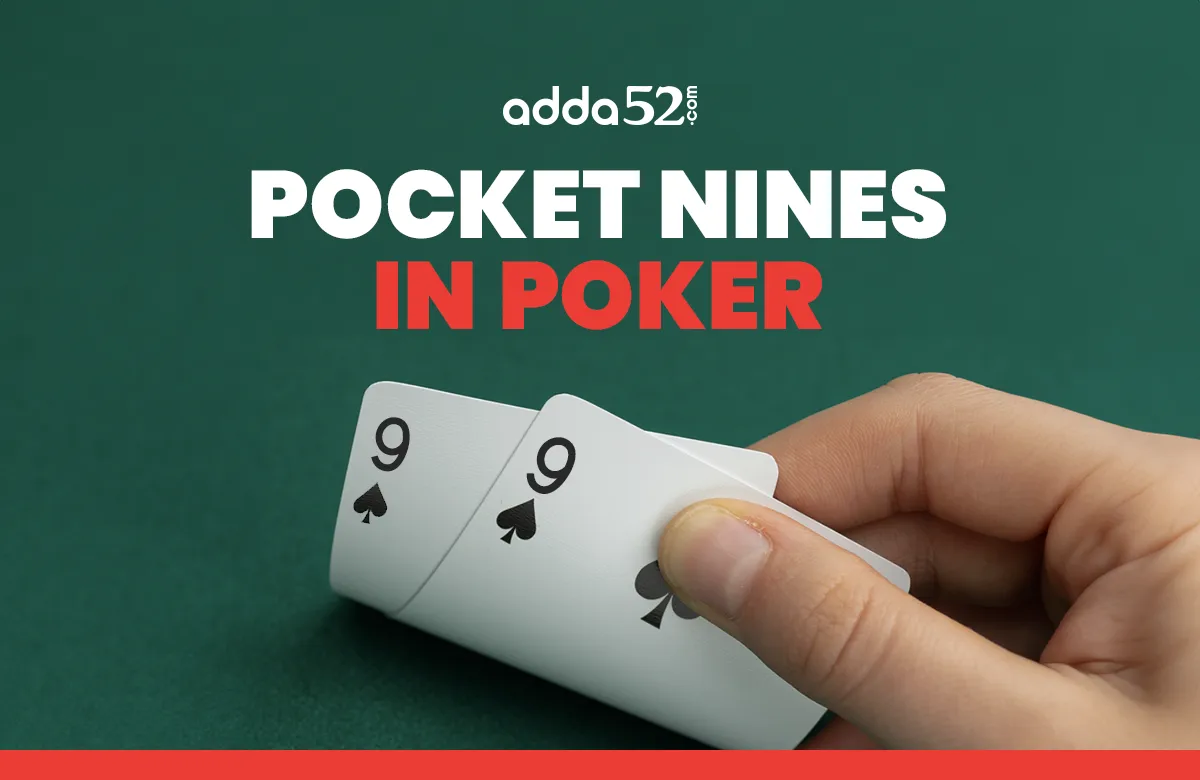
Introduction
Pocket Nines is a tricky hand. Your chances of winning will depend on various factors. It becomes more difficult if you are a beginner as you may not understand the probability of each hand or board.
Read further to learn how to play pocket nines in poker. We will also give you some tips to win with this hand.
Objective
The article aims to help you understand the pocket nine and how to win the game.
How to Play Pocket Nines Preflop
Playing pocket nine requires both aggression and caution in pre-flop. Some factors can affect your gameplay and decisions, such as your position at the table, the stack size, and your opponent’s gameplay.
If sitting in an early or middle position, you can raise with a standard 2.5-3 times the big blind. But if you face a 3-bet raise, you should fold unless you can read your opponent’s strategies.
Pocket nines are very strong if you are sitting in a late position. You should raise and try to build a pot. But again, if there are multiple raises, be cautious and try to call instead of raise.
To 3-Bet or Not To 3-Bet
Several factors affect whether to 3-bet or call a pre-flop raise. Let’s look at these factors individually:
- Table Position: A 3-bet raise would be risky if you play from an early or middle position. If your opponents have raised several times before you, suppose you are playing from the late position. You can 3-bet raise. In this position, you get an idea of the game and your opponent’s gameplay.
- Players: Your gameplay will also differ if you are against a tight or loose player. A 3-bet can be effective against a tight player, especially if they fold. You can play a 3-bet against loose players, too. It can help you build the pot, but be ready to face a call or 4-bet.
How to Play Pocket Nines on Different Board Textures
To understand this, we have considered four types of boards: High-card board, Middling board, connected board, and Low and Paired Boards.
- High-card boards include high-ranking community cards like King, Queen, or Jack. You should be careful on board like this, as many pairs can beat you.
- A middling board consists of cards with moderate ranks, such as suited or connected cards. These boards are better for pocket nine. Just say you have J♥ 5♠ 8♦ these cards on the community table. Only one community is higher than your pair, i.e., ‘J’. It’s unlikely that with this one card, your opponent has a better hand.
- Low and Paired hands: As the name suggests, these tables have low-ranking cards. This means you have a higher chance of winning.
- Connected Board: A board with sequential cards connected in rank. These types of tables can be risky for you. There is a high chance that your opponents will have better hands than your pair.
Post Flop Tips to Play Pocket Nines in Poker
Here are some strategies to play pocket nines post-flop:
- Start by evaluating the Flop. Is there a possibility of straight or flush, and how coordinated is the board? Analyse these before making any decision.
- If the Flop is not coordinated, raise. You might still have a chance to win.
- If you get overcards such as Ace or Kings, proceed with caution. These high-ranking cards can beat your pocket nines.
- Adjust your strategy based on the board. Be aggressive on low and middling boards, and be cautious when playing on high-card boards.
Frequently Asked Questions
Is Pocket 9s a good hand?
Pocket nines are tricky. Pocket nines are tricky. Although you won’t have a more substantial premium pocket, this is still a decent hand.
Conclusion
Playing pocket nines demands a balance of aggression and caution. Understanding the table position is also crucial; this will help you strategise your game. Lastly, the fundamental rule to winning any game is to practice. Practice will help you develop better strategies to win and master the game.
